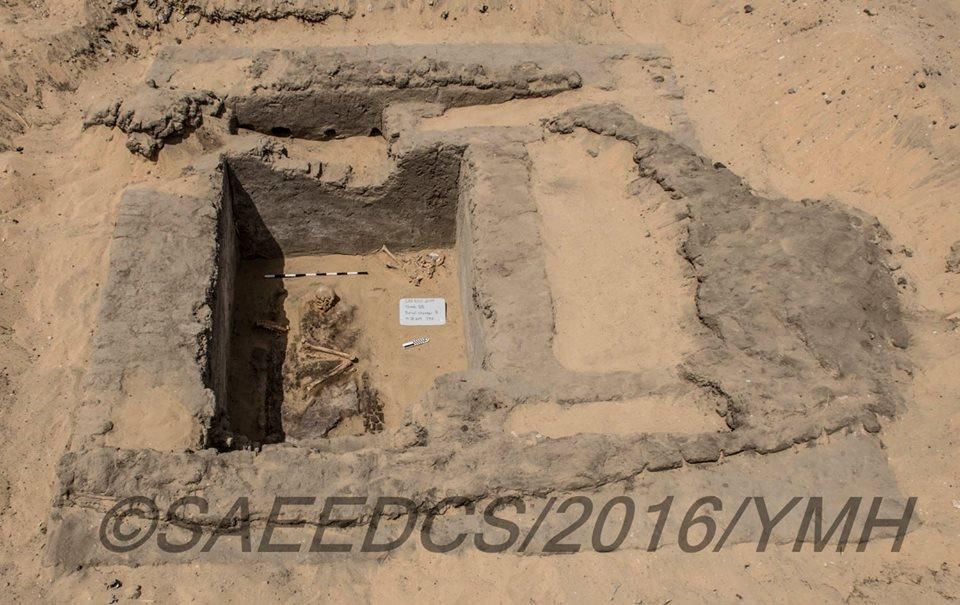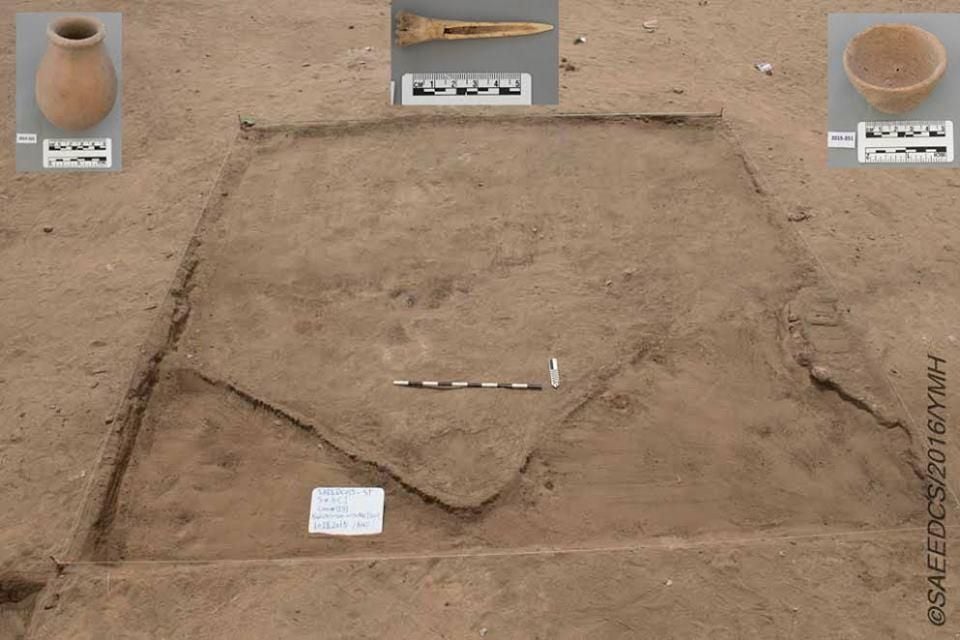Newly Uncovered Ruins Reveal 7,000-Year-Old City in Egypt
Ancient huts and tombs could be the final resting places of local elites
/https://tf-cmsv2-smithsonianmag-media.s3.amazonaws.com/filer/83/2a/832a0467-a0b6-4415-819f-b3c409037bf5/15095590_1244699408909040_2380792102564137970_n.jpg)
Last week, archaeologists working for the Egyptian Ministry of Antiquities announced that they had uncovered a previously unknown set of ruins just a few hundred yards near the ancient Egyptian capital city of Abydos. Just a few hundred yards away from the city’s central temple, the researchers uncovered the foundations of huts, pieces of pottery and stone tools, as well as 15 large graves. The ruins may have been the final resting place for the capital’s elites, the Agence France-Presse reports.
Preliminary findings suggest that the site could be up to 7,000 years old, which places the find in the era of the First Dynasty in the southern province of Sohag. While this cemetery may not be quite as ostentatious as Pharaoh Khufu’s Great Pyramid, the grand size of these graves compared to others previously found in Abydos suggest that the tombs belonged to people of note, Reuters reports.
“The size of the graves discovered in the cemetery is larger in some instances than royal graves in Abydos dating back to the first dynasty, which proves the importance of the people buried there and their high social standing during this early era of ancient Egyptian history,” officials from the Ministry of Antiquities said in a statement in Arabic, Reuters reports.

"About a mile behind where this material is said to be we have the necropolis with royal tombs going from before history to the period where we start getting royal names, we start getting identifiable kings,” Chris Eyre, an Egyptologist at the University of Liverpool who was not involved with the findings, tells the BBC. "So, this appears to be the town, the capital at the very beginning of Egyptian history."
While it’s unclear whether the newly uncovered site was historically part of Abydos or was originally a separate settlement that the capital city absorbed, it could still unveil plenty of new details and insights into the area’s residents. One working theory is that the site was home to high-ranking officials who lead construction on Abydos’ royal tombs, but still wanted to show off their own social standing despite living on the outskirts of the city, Peter Dockrill reports for ScienceAlert. The artifacts found at the scene could also have been left behind by the workers who built the city’s majestic tombs once their work was complete.
